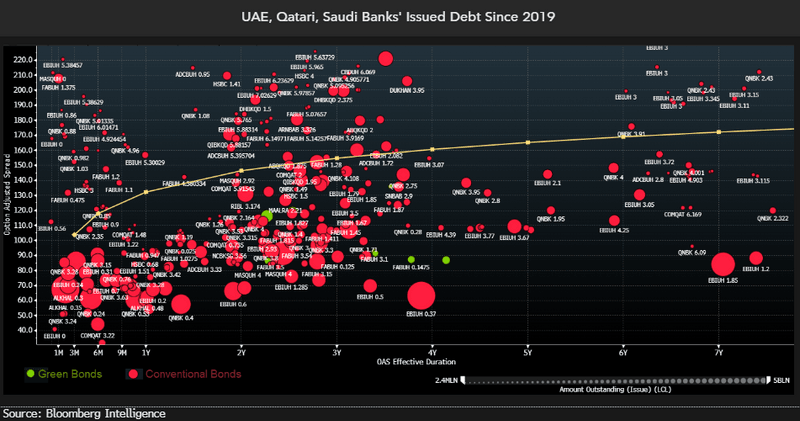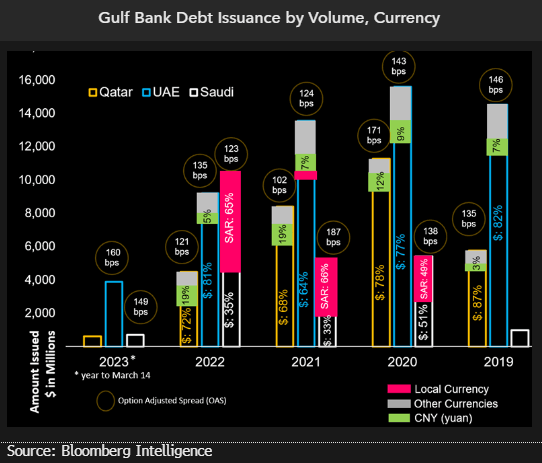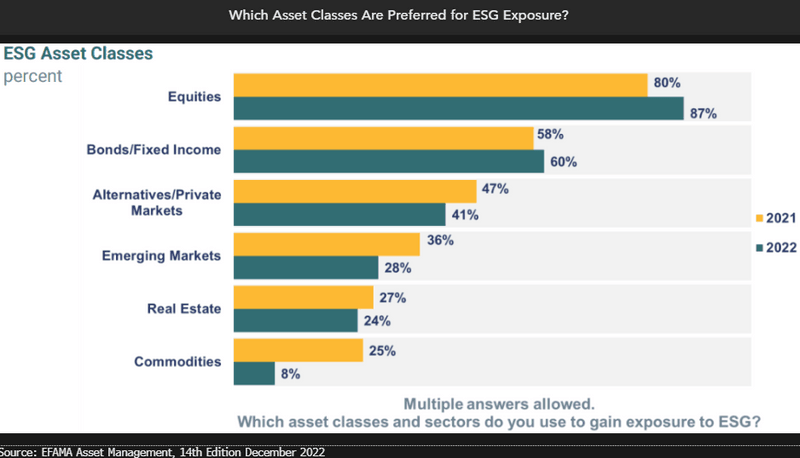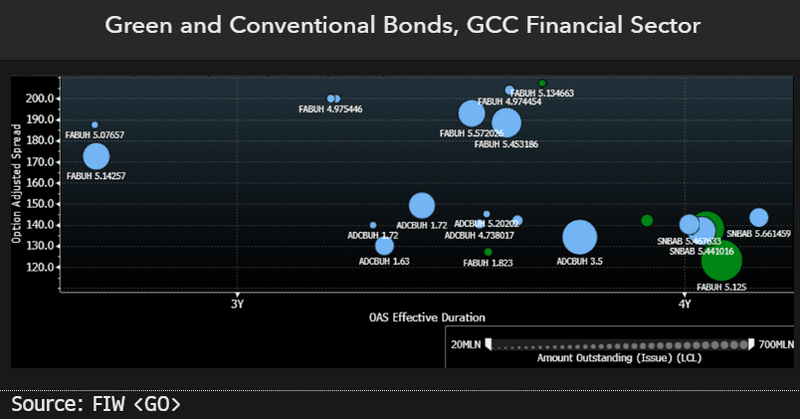Gulf banks yet to play a role in green transition
This analysis is by Bloomberg Intelligence Senior Industry Analyst Edmond Christou and Bloomberg Intelligence Senior Associate Analyst Lea El-Hage. It appeared first on the Bloomberg Terminal.
Bold FDI structure key to enticing green investors, gulf issuers
Establishing an effective green framework in the Gulf is critical to driving demand for climate finance via funding from developed economies. Greener spending in the region should be at the forefront of the economic-diversification agenda, with about $1.5 trillion of infrastructure outlay into non-energy projects expected over the next five years. Global investors with greater ESG mandates, such as pension funds and insurers, have a key role to play in bankrolling these projects.
Yet the absence of “greenium” in Gulf banks’ secondary-market green-debt trading suggests an inability to improve the cost of borrowing on environmental issuance, deterring issuers.
Gulf banks have role in green funding of $1.5 trillion projects
Establishing a solid financing mechanism is key to mobilizing green FDI in the Gulf region and driving an economic transformation that rewards investors and issuers. Only 5% of the debt issued by Gulf banks since 2019 has been green, but the area’s project pipeline (excluding energy) is expected to be about $1.5 trillion in the next five years.
Only 5% of $105 billion gulf-bank debt was green
UAE, Qatari and Saudi banks’ debt issuance has topped $105 billion since 2019, yet only 5% of that comprised green or sustainable instruments. The Gulf region’s construction pipeline is expanding, with an expected total project value (excluding energy-related infrastructure) of about $1.5 trillion over the next five years. Spending will be channeled to transform the area’s fossil-fuel-reliant economies.
Given the shallow capital market, a more-developed structure is needed to attract foreign direct investment (FDI). The green transformation is likely to be a key pillar in the region’s economic-development agenda, but first, it’s critical to establish an effective financing mechanism that rewards investors and issuers for helping mobilize FDI in emerging economies.

Saudi banks overtake UAE, Qatari peers on debt issuance
Saudi banks’ debt issuance has surpassed UAE peers for the first time, comprising 43% of the total ($24 billion) in 2022 vs. 5% in 2019. Issuance among Qatari, UAE and Saudi lenders has hovered around $26 billion, on average, over the past four years. UAE banks accounted for 70% of all debt in 2019, but this share has gradually fallen, reaching its lowest historical level in 2022 (38%). Qatari peers’ allocation was stable (30-35%) in 2019-21 before declining to 19% last year on subdued lending, ample domestic liquidity and market volatility. The latter led QNB to tap into private placements over external debts.
Dollar issuance is dominant in the region, except for at Saudi banks, which issue liquidity and capital needs in local currency. The provision of yuan debt has been high in Qatar over the past three years.

Global investors key to emerging markets’ ESG adoption
Almost two-thirds of global investors prefer active funds to integrate ESG, with equity (80%) and bonds (58%) the most sought-after assets, based on a 2022 Capital Group study. Among those surveyed, meeting client needs (27%, tilted toward US-based investors) and making a positive impact (25%, tilted toward Europe) are the most-cited motivations for adopting ESG. Asian investors tend to focus on improving ESG metrics, while usage of emerging-market assets (fourth-most popular) fell last year.
European assets under management reached €32 trillion in 2021, led by the UK, France, Germany and the Netherlands. Funds invested 48% of their debt in Europe vs. 36% of equities. Institutional investors, pension providers and insurers have a long-term view and an appetite for alternative assets.

Lack of green premiums may keep GCC issuers on the sidelines
Gulf lenders need to make progress on green-bond issuance to align their roadmaps with net-zero targets and attract foreign institutional investors with ESG mandates. As host of COP28, the UAE and its neighbors are in the spotlight and ESG debt potentially offers hope of a quicker transition to net zero. Yet to align the interests of investors and issuers, green-bond debt costs need to come down to lower levels with relevant impact reporting.
Green bonds in dollars, euros are less attractive for GCC banks
Green debt will become attractive for issuers in the Gulf financial sector if the product shows cost benefits. Most of the regional bonds issued in dollars and euros don’t get a greenium, which is when a green bond benefits from a lower yield compared to its rival conventional instruments. We analyzed the option-adjusted spread of dollar green debt for GCC banks vs. conventional instruments with same payment rank, coupon type and duration. We excluded Sukuks as they are classified as sustainable investments, but aren’t green. Abu Dhabi Commercial Bank’s greenium is close to nothing, while First Adu Dhabi Bank’s option-adjusted spread for conventional bonds is lower than for green bonds. Saudi National Bank’s only green issuance has a fixed coupon vs. a variable coupon for other issuances, hindering comparisons.
